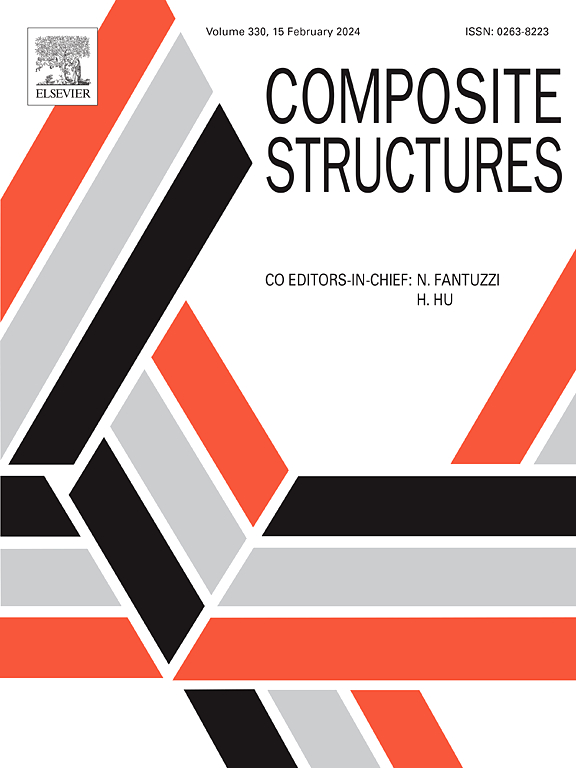Investigation on the energy absorption characteristics of novel graded auxetic re-entrant honeycombs
IF 6.3
2区 材料科学
Q1 MATERIALS SCIENCE, COMPOSITES
引用次数: 0
Abstract
In this work, innovative graded auxetic re-entrant honeycombs constructed by adjusting the geometric parameters of a core unit cell are proposed, and their deformation modes and energy absorption characteristics with different impact speeds are systematically investigated. The novel graded design utilizes structural hierarchy on the meso-scale and functional gradient on the macro-scale. The numerical simulation models are verified by comparing the experimental results. The results show that compared with the ungraded honeycomb (URH), one of the graded honeycombs (GRHs), named GRH1, can greatly improve the specific energy absorption by 36.4%, 10.8%, and 6.00% for the quasi-static, low, and high-speed impact at a strain of 0.6. At the same time, the initial peak stress of GRH1 is decreased by 43.2% and 27.1% compared with that of URH for low and high-speed impact, respectively. It could be indicated that the GRH1 was an ideal energy-absorbing structure. This work provides a new route for designing graded auxetic honeycombs with enough insight to understand the deformation mechanism of the structures, which could be used in lightweight buffer protective systems.
新型分级辅助重入式蜂窝的能量吸收特性研究
本研究提出了通过调整核心单元的几何参数而构建的创新分级辅助再入蜂窝,并系统地研究了其在不同冲击速度下的变形模式和能量吸收特性。新颖的分级设计在中观尺度上利用了结构层次,在宏观尺度上利用了功能梯度。通过对比实验结果,对数值模拟模型进行了验证。结果表明,与未分级蜂窝(URH)相比,其中一种名为 GRH1 的分级蜂窝(GRH)在应变为 0.6 的准静态、低速和高速冲击下可大大提高比能量吸收率,分别提高 36.4%、10.8% 和 6.00%。同时,与 URH 相比,GRH1 在低速和高速冲击下的初始峰值应力分别降低了 43.2% 和 27.1%。这表明 GRH1 是一种理想的吸能结构。这项研究为梯度辅助蜂窝的设计提供了一条新的途径,并为了解结构的变形机理提供了足够的见解,可用于轻质缓冲防护系统。
本文章由计算机程序翻译,如有差异,请以英文原文为准。
求助全文
约1分钟内获得全文
求助全文
来源期刊

Composite Structures
工程技术-材料科学:复合
CiteScore
12.00
自引率
12.70%
发文量
1246
审稿时长
78 days
期刊介绍:
The past few decades have seen outstanding advances in the use of composite materials in structural applications. There can be little doubt that, within engineering circles, composites have revolutionised traditional design concepts and made possible an unparalleled range of new and exciting possibilities as viable materials for construction. Composite Structures, an International Journal, disseminates knowledge between users, manufacturers, designers and researchers involved in structures or structural components manufactured using composite materials.
The journal publishes papers which contribute to knowledge in the use of composite materials in engineering structures. Papers deal with design, research and development studies, experimental investigations, theoretical analysis and fabrication techniques relevant to the application of composites in load-bearing components for assemblies, ranging from individual components such as plates and shells to complete composite structures.
 求助内容:
求助内容: 应助结果提醒方式:
应助结果提醒方式:


